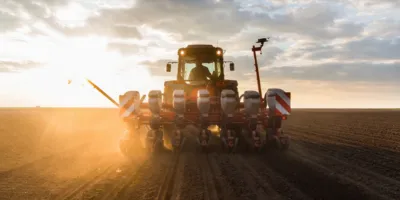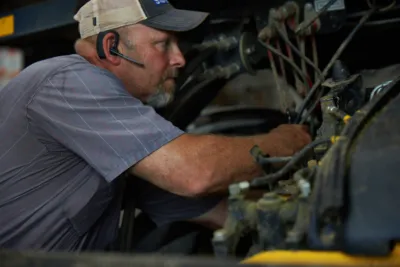When is the perfect timing for corn silage harvest?
Corn silage harvest is right around the corner and the perfect time to start planning is now. Before silo and silage management can be discussed, the first step is harvesting the forage at the correct moisture.

Corn Silage Harvest Timing – It is all about the moisture
When making silage, we often think about the logistics of packing the material, options for silage inoculant, covering, and then feeding out. While all these steps are important and management during these times is just as important the harvest is where it all begins. If the proper steps are taken during harvest, it will set the silage up for success in the long run. The first step is determining when the correct time is to harvest to maximize quality while also creating an environment for proper fermentation.
Corn for silage is harvested based on maturity and whole plant moisture content. The correct maturity and moisture level are essential for proper fermentation and a highly digestible, quality feed. So, how do we know when it is the right time to harvest? Overall, there are many factors that affect when corn silage is going to be ready for harvest including planting date, weather, hybrid type, plant health, and many others. This means there isn’t a set-in-stone that so many days after planting the crop will be ready. Instead, we use some tools to estimate when our harvest date will be and then utilize moisture testing to determine when it is ‘go time’ for harvest. The optimal moisture for corn silage fermentation is 62 to 70%. Harvesting material that is too wet can result in excessive losses due to seepage and lead to mis-fermentations with unwanted end products produced. On the other hand, harvesting material that is too dry makes it more difficult to adequately pack and residual oxygen can lead to mold growth and aerobic stability issues at feed out.
Estimation of optimal maturity and harvest date can be determined with both silking date and kernel milk line. Both methods are very much estimations as outside factors can change these and both have been found to not be 100% accurate. The rule of thumb for a silking date is about 42 to 47 days after silking. As these dates draw near the kernel milk line can also be used as an estimation. Around ½ to 2/3 milk line is an indicator that measures should be taken to determine when it is time to harvest. The milk line is a good indicator of how much starch or energy is available but is not a good indicator of whole plant moisture. Instead for the final decision on when it is time to begin harvest, moisture testing is the most accurate method. There are multiple methods of moisture testing that can be utilized including the use of a Koster oven, microwave, or NIR technology. Regardless of the method used, it is best to sample at least 10 whole plants from different areas in the field in question. It is also important to start testing earlier rather than later to ensure that the optimal timing for moisture and maturity is met.
When it comes down to it moisture is the driving factor for fermentation and harvesting at the correct moisture will result in the highest quality forage. In areas where the forage tends to get “too dry” it is better to focus on obtaining the optimum moisture over optimum maturity.
When you click at the button, you can receive this article as PDF-file.
Listen to the full interview below and visit www.BONSILAGEUSA.com for more information. If you would like to book an consultation with one of our silage experts, click HERE.


